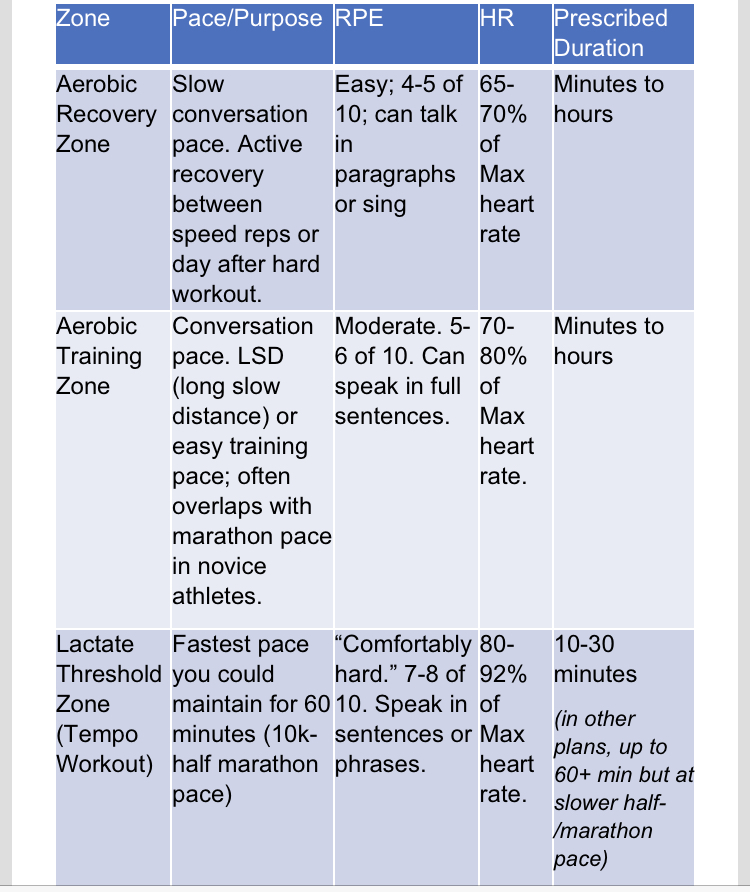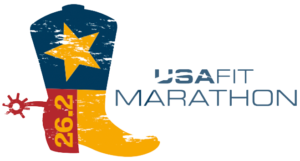Pace - How Fast Should I Go?

PACING: How fast should you go?
Every run or walk during the week should have a purpose, and the intensity of the workout should match that goal. When we start the season, we are building our base (increasing mileage, gaining aerobic fitness and endurance). Most of the runs and walks should be an easy effort, or “conversational” so we can stay in “fat burning” mode. When we add faster and harder workouts (hills, intervals, tempo) the intensity will be greater - with the goal of improving speed, efficiency, form, muscle fiber recruitment, VO2 max or lactate clearance, etc.
But how do you know if you are pushing yourself the right amount? There are three ways to judge your effort: Pace, Perceived Exertion, and Heart Rate (see Coach Jeff’s entry for more on Heart Rate Training).
PACE
Elite and experienced athletes often train by pace. For this method, you need a GPS watch, or activity tracker on your phone; and how your current pace (recent race or time trial) applies to different workouts. But it’s difficult to know your pace if you are just getting started! Likewise, if you are returning to exercise after a time of being inactive, or recovering from an injury, your pace may be different than before.
The 3 mile timed route on week two may help give you an estimate for your aerobic pace. However, as you improve during the season, you may need to adjust. You may get faster; or you may need to slow down to complete the long routes at a consistent pace, without fading or taking breaks. Other factors (such as heat, cold, altitude, and illness) can affect pace as well.
I recommend paying close attention to your perceived exertion for clues on how you are doing with pacing.
Rate of Perceived Exertion (RPE)
In this method, you pay attention to how your whole body feels during the workout. No special equipment needed. How hard are you breathing? How difficult or easy does it feel? Do you feel light and energetic, or heavy and tired?
Easy days and Saturday long runs/walks should be at “Conversation Pace.” You should be able to talk and carry out a conversation (full sentences) with your fellow walkers and runners. If you can only get 3-4 words out before gasping for a breath, you should slow down and join the next pace group. It’s easy to fake it with a shorter walk/run. But if you are going too fast, 1) you may not be able to complete the workout at the same pace you started; 2) you aren’t training the right energy system (endurance, fat burning); and 3) you may get injured by putting more stress on muscles, tendons and ligaments.
Some people use an RPE scale from 1-10, or 1-20. Others think of their effort in terms of colors (green, yellow, orange, red) or descriptive words. Here’s an example of an RPE scale from 1-10:
3 = very light exercise, easy stroll
4 = light exercise (easy training, active recovery)
5-6 = moderate-hard exercise (conversation pace, warm-up/cool-down)
7-8: “comfortably hard,” (tempo pace)
8-9: very hard (speed work, hill repeats)
10: maximal effort (all out 400 meters)
HEART RATE (HR) TRAINING
This is the most technical method, and requires a heart rate monitor (chest straps are more accurate than wrist-based watches). But your heart rate won’t lie: it will show if the heat/cold, illness, imcomplete recovery, or lack of sleep are affecting your workout. You need to know your Maximal heart rate and target heart rate zones for different workouts. See Coach Jeff’s post on heart rate training for more info.
ZONES
Zones are a useful way to think about effort for different types of workouts, and can be used with Pace, RPE or HR training. Please know that various plans and coaching philosophies describe zones and efforts differently. Here’s an example to give you an idea, based on the efforts we prescribe in the USA Fit plan:






